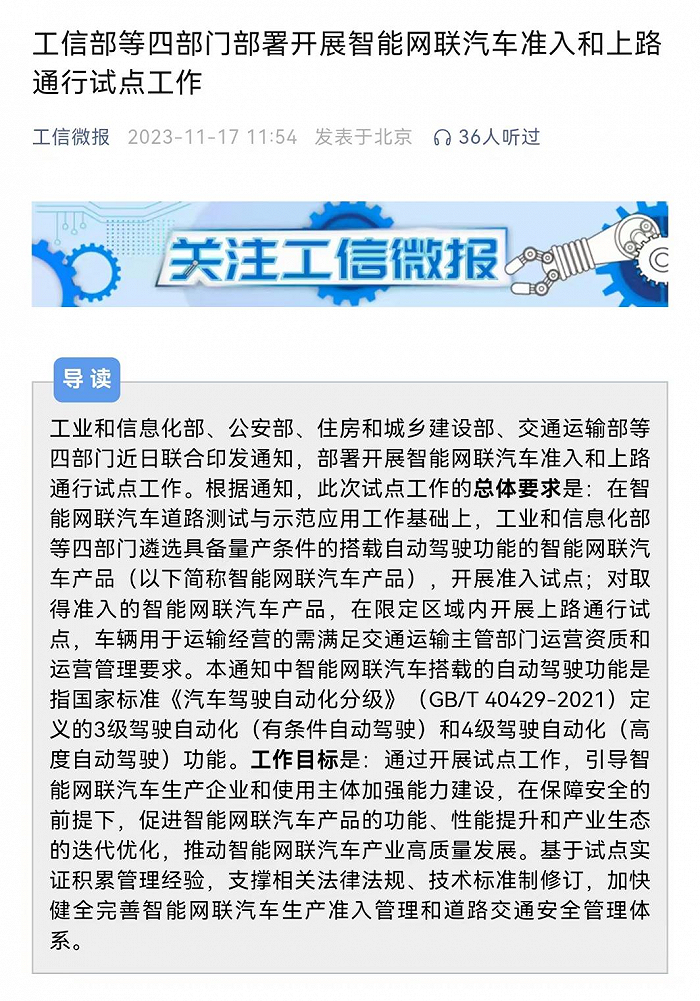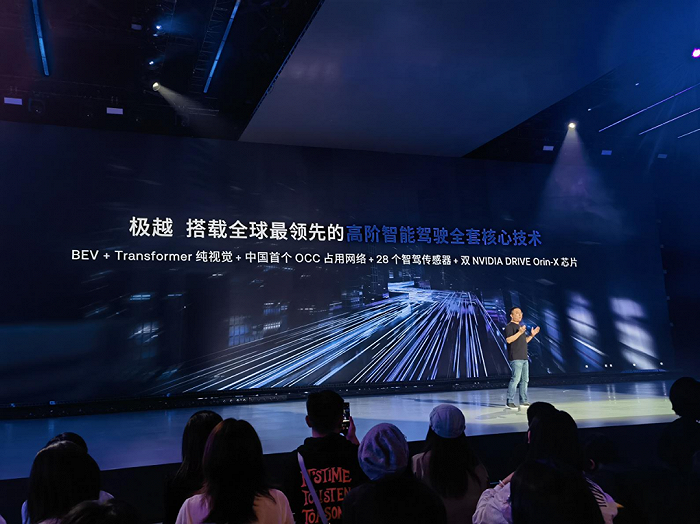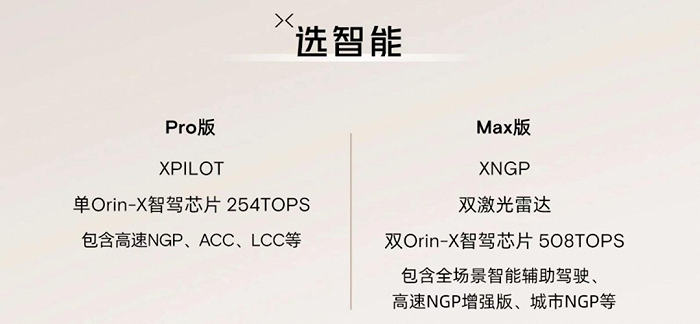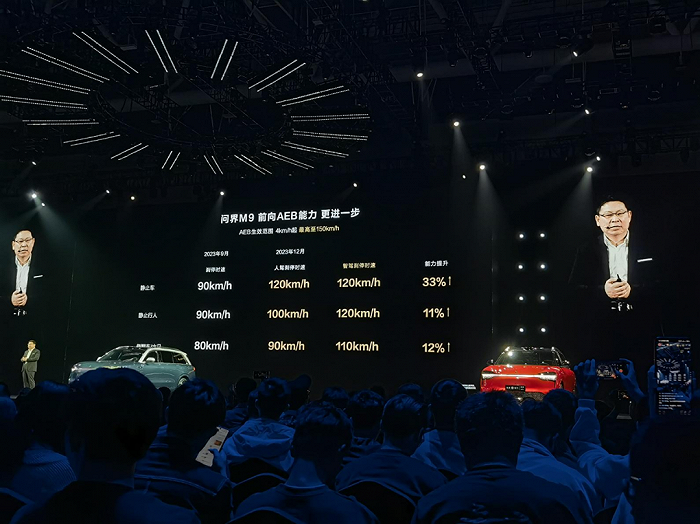The adoption of autonomous driving is faster than expected. By the end of 2023, the Ministry of Industry and Information Technology announced that it would issue test licenses for L3 and L4 level autonomous driving vehicles that meet production conditions, marking the countdown to the legal road use of these vehicles. BMW, Mercedes-Benz, BAIC, SAIC, Changan, Dongfeng, and Saleen have all obtained L3 level autonomous driving test licenses. At the same time, car brands that used to rarely promote even assisted driving are now claiming to have reached the level of L2.9, with various creative videos flooding the internet. In just one year, there has been a revolutionary shift in the autonomous driving roadmap, from high-precision maps to LiDAR technology. The “crazy rush” for L3 licenses began on November 17, 2023, when the Ministry of Industry and Information Technology, the Ministry of Public Security, the Ministry of Housing and Urban-Rural Development, and the Ministry of Transport jointly issued a document announcing the start of pilot projects for the access and road use of intelligent connected vehicles. The document stated that, based on road testing and demonstration applications of intelligent connected vehicles, the four departments will select intelligent connected vehicle products with autonomous driving capabilities to conduct access pilot projects. Products that obtain access qualifications can conduct pilot road tests for L3 and L4 level vehicles in designated areas.

From a marketing perspective, Beiqi Jiuhu and SAIC Zhiji are emphasizing “the first batch of pilot projects,” Changan states “the earliest to obtain” and “the most at one time,” Sailesi “the first and only to obtain dual-city testing” … These car companies holding L3 level test licenses seem to be emphasizing their “early, fast, and abundant” achievements to demonstrate their presence in the field of autonomous driving and the level of attention from the competent authorities. Obtaining an L3 level test license is undoubtedly an excellent publicity point for the new energy vehicle market in terms of price, technology, materials, and supply chain. When these car companies are showing off their “industry-leading” L3 level licenses, BYD seems to be a bit dissatisfied and hastily announced that it had already obtained an L3 level test license for high-speed roads in Shenzhen in July 2023, emphasizing that it is the first car company in the country to obtain an L3 level test license. Thus, the marketing behavior of car companies showing off their L3 level test licenses has come to an end. Xpeng and Baidu, who are not joining in the fun When looking closely at the car companies or brands that have obtained L3 level test licenses, it is found that the first to show their eligibility are not the well-known companies with advantages in autonomous driving technology such as Huawei, Xpeng, and Baidu. On the contrary, it is BMW and Mercedes-Benz, SAIC, and Changan, which are considered to be relatively backward in terms of intelligence, that have been “arranged” early, while Xpeng and Jiyue, which have been leading the industry in autonomous driving technology, have not mentioned obtaining an L3 level access license. Regarding the issuance of L3 level autonomous driving licenses, a person related to Xpeng Motors told ‘Tansket Travel’ that the Xpeng G9 had obtained the first L4 level autonomous driving test license in Guangzhou as early as October 31, 2022, and became the first car in the industry to obtain road test qualifications for autonomous driving within the scope of Chinese roads without changing hardware. In April 2023, Xiaopeng G9 officially obtained the passenger-carrying operation test license for intelligent connected vehicles in Guangzhou, and the test scope has also covered all general test roads in Guangzhou. The aforementioned people said that in terms of technical capabilities, Xiaopeng Motors already has an L4 Robotaxi license. L3 licenses are not uncommon. From a commercialization perspective, L3 tests need to be conducted in a limited area. The key to L3 lies in the definition of supporting road environments and the bottoming of regulations and insurance, but at present, there are no clear definitions, regulations, and insurance for L3. Related personnel from Jiyue Automobile commented on “Exploration Travel”, stating, “In the L3 test list, except for a few brands and Jiyue, which are the leading camp of automatic driving technology, other brands are not leading. This also indicates that whether a brand can make it to the test list and whether the technology is leading have no relation. It is more about ‘trial’ and aiming to establish a system. Jiyue did not participate in this test, and this decision was made based on various considerations unrelated to technology.” He said, “Jiyue’s advanced intelligent driving is empowered by Baidu Apollo’s automatic driving technology. Baidu Apollo has the world’s leading L4 technology, with 10 years of technical accumulation, and the operating test mileage of L4 level exceeds 70 million kilometers, with over 2 million commercial orders for unmanned taxis (robotaxis).” In addition, “Exploration Travel” also noted that in March 2023, Guidehouse Insights, a research institution, released a global analysis report on autonomous driving technology companies, showing that Baidu, Waymo, Mobileye, and other world-class leading autonomous driving technology companies are in the top tier globally, and Baidu has been the leader in the autonomous driving industry for three consecutive years. It is worth mentioning that the first car model jointly launched by Baidu and Geely, the Jueyue 01, not only carries Baidu’s Apollo “pure vision” technology solution based on visual perception + image algorithm, but also eliminates the use of lidar, becoming the second globally to achieve mass production and deployment of pure vision technology for autonomous driving after Tesla.

The release event of the Xpeng 01 Revolutionary upgrade From high-precision maps to solid-state LiDAR, in just 2023, the route plan for autonomous driving has undergone an almost revolutionary transformation. At the 1024 Tech Day, Xpeng Motors introduced the “pure vision” solution after the map-free mode. In January 2024, the new Xpeng X9 was launched with the XNGP+XPilot autonomous driving solution. The arrival of the Xpeng X9 breaks the distinction between the intelligent driving version and non-intelligent driving version on the G6 and G9 models, and also signifies that the era of intelligent driving as standard across the entire Xpeng lineup has arrived.

On the other hand, the landing speed of Xiaopeng’s autonomous driving has far exceeded the expected target. From the official landing of XNGP in April 2023 to the end of December, Xiaopeng’s XNGP has already covered 243 cities across the country, far exceeding the expected target set at the launch event of Xiaopeng G6 at the end of 2023: covering 50 cities in the second half of 2023 and 200 cities in 2024. The early arrival of the legal landing of autonomous driving is obviously inseparable from the acceleration of technological innovation and product iteration. This is not only a great opportunity for the development of new energy vehicle brands, but also a possibility for Chinese cars to go global. The most worrying situation is that from “looking down on” and “disdaining” to finally “not catching up” and “too late”. BYD Chairman Wang Chuanfu once bluntly stated at the 2023 annual financial report exchange meeting, “Autonomous driving is nonsense, it’s all hype. It’s just a new outfit for the emperor.” This remark caused a sensation, and it also put BYD at odds with Huawei, which focuses on intelligence and assisted driving. Wang Chuanfu’s concern about autonomous driving is, with a million car accident events every year, if all of them are equipped with autonomous driving and an accident occurs, who will take responsibility to deal with the various car accident scenes of a million levels each year, the workload of machine simulation learning is also a problem. At the M5 launch event in April, Huawei’s Yu Chengdong responded to Wang Chuanfu’s “autonomous driving is nonsense” statement, “There are two reasons why autonomous driving is nonsense, either it’s a lack of understanding of the industry, or it’s said on purpose.” As a result, BYD has also been labeled as “backward in intelligence”. A year ago, the statement “autonomous driving is nonsense” did cause a lot of controversy. One is the leader of new energy vehicles, and the other is the ICT giant of hardcore technology. Both of them have a lot of potential, whether it’s from a marketing perspective or in terms of technological direction. But looking back now, in the just-passed 2023, both BYD and Huawei have had their shining moments. BYD has joined the camp of assisted driving in the subsequent launch of its E-LOOK and TANG models. More importantly, BYD had already obtained the coveted L3 level license half a year ago. Meanwhile, Huawei’s ADS 2.0 autonomous driving has not disappointed. With the introduction of AI large models, Huawei has handed over the “workload problem” that worried Wang Chuanfu to AI, continuously improving the efficiency of recognizing real-time road conditions and obstacles outside the vehicle. As of November 2023, Huawei’s ADS 2.0 can provide learning and training computing power of 2.8E FLOPS, with the ability to learn driving mileage of over 12 million kilometers per day, and update the model every 5 days. With the landing of subsequent Huawei intelligent driving products, the computing power scale will continue to increase. The most direct manifestation of the advantages of learning and training with large models can be reflected in AEB’s active safety “braking.” At the Huawei Wanjie M9 launch event, Yu Chengdong displayed a set of data showing that the Wanjie M9 can automatically emergency brake for stationary vehicles or pedestrians at 90 kilometers per hour in September, and further increased to 120 kilometers per hour in December. This means that the Wanjie M9 can make a rapid braking response when it detects obstacles at a maximum speed of 120 kilometers per hour, effectively alleviating Wang Chuanfu’s concerns about the workload of simulating car accident scenes.

M9 Conference on Autonomous Driving Technology Experienced players in the field of autonomous driving technology are not limited to domestic car companies. A Tesla employee told ‘Exploring Travel’ that the difficulty of landing Tesla’s FSD in China is not due to the complex road environment, which can be easily solved through more testing. The real issue is that Tesla’s FSD has a leading edge in autonomous driving, and if it is allowed to enter the Chinese market early, it may seriously squeeze the development space for domestic autonomous driving. When domestic companies are firmly established in autonomous driving technology, then allowing Tesla’s FSD to compete may promote the long-term healthy development of the industry. From fuel vehicles to new energy, from electrification to intelligence, it is the inevitable trend of industry development. Autonomous driving is the best embodiment of intelligent technology. With Huawei, Xiaopeng + Didi, Baidu, Xiaomi, and other companies that have obtained L3-level autonomous driving, 2024 will definitely be a year of competition among various forces. Who will take the lead, who will fall behind, who will overtake on the bend, and who is just talking on paper, whether it’s Li Kui or Li Gui, 2024 will reveal it all.